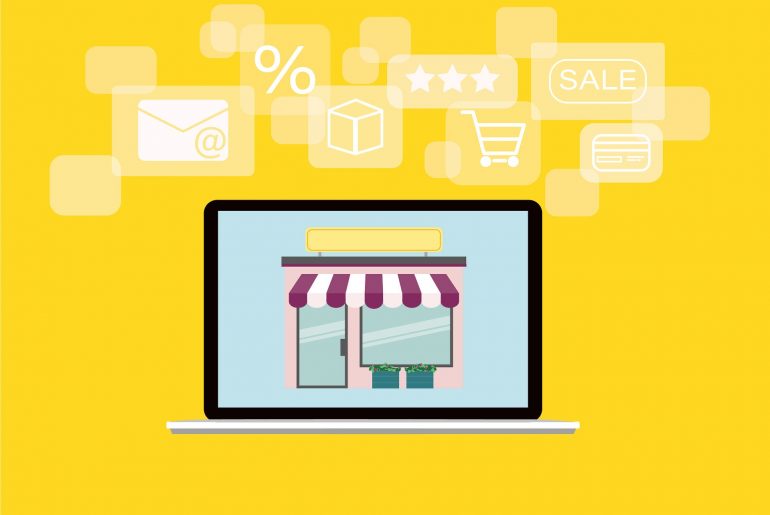The three pillars of modern digital marketing are as follows: search, social, and content. It’s now the commonly accepted wisdom that any successful marketing strategy is going to include a focus on search engine optimization, content, and social media marketing. Even B2B companies, who traditionally relied on outbound marketing and sales tactics to land big clients, are now facing the realities of how omnichannel is forcing B2B leaders to meet customer demands. B2B automation help marketers create more leads and close more deals.
But whether your B2B company is focusing on new digital marketing initiatives or relying heavily on tried and true outbound tactics, it’s all for naught if your process isn’t streamlined. That’s why investing in a solid marketing automation platform is a necessity. A good software platform is going to make sure that you’re looking at the right data from your content, social, and email marketing initiatives. Moreover, it will tell you exactly who is interacting with your brand and how.

Below we list tips on the specific features you need to look at in an automation software to ensure your business gets the most out of it.
The basics of B2B automation
There are a number of features any B2B business will want in their marketing automation platform (MAP). Before getting into the more complex capabilities of modern automation platforms, let’s focus on the very basics. Here are the first things to look for:
- Ease of use. Is the platform user-friendly, wieldy, and intuitive? The last thing you want is to waste excess training hours on a cumbersome system.
- Capabilities. Is the platform built to perform one or two tasks effectively, or does it offer a broad set of features and tools? Because you’re going to want the latter.
- Customization. A good platform is going to leave room for users to customize it according to their specifications and preferences.
- Analytics and reporting. How well does the platform track activity? How deep do the insights go? Can it assess the performance of many different initiatives at one time?
Now that we’ve covered the basics, below we’ll get into some more advanced features to look for.
An enhanced lead scoring system of B2B automation
In the simplest of terms, lead scoring is a manner of ranking prospects on a scale that highlights the value every single lead represents a particular company. Essential features that are a direct extension of lead scoring include lead profiling as well as tracking and monitoring leads.
Now, any B2B sales or marketing guru worth his or her salt is aware of the innate importance of this, as it can tell a lot about which leads to pursue and which to leave alone. This is why it’s now all but common practice for B2Bs to design a comprehensive lead-qualification model. Statistics even show that 68% of B2B marketers are going so far as to factor in both behavioral and demographic scoring in these models.

But with so many different tactics, ideas, and strategies out there regarding how to build the best lead-scoring model, how do you really know which is right for your operation?
Well, you can take away a lot of the guesswork by selecting an automation platform with an enhanced lead-scoring system. A good system on a solid platform will do many things, including factoring in negative scoring and score degradation (i.e., reducing inflated scores and eliminating scoring bias), using separate lead-scoring models (ideal for companies with different product lines), setting qualification thresholds, identifying “high value” prospect actions (visiting a pricing page, the “contact us” page, etc.), scoring based on email conversions, etc.
Offers a multi-channel view of prospect behavior
Anyone working in digital marketing is well aware that multi-channel is a new reality. Today’s customers, be they in the B2B or B2C world, want a seamless experience where they can engage with brands via multiple channels at any time on any device. Moreover, they want the freedom to start shopping on one device and continue that process on another. Therefore, any platform that provides integrated channel marketing solutions is best positioned to help your brand stay in the forefront of the minds of your target audience.
Robust sales and marketing alignment features
Still Not an User of Aritic PinPoint Automation?
If the goal is efficiency in your sales and marketing efforts, then you must eliminate departmental silos. And while there are certainly best practices out there for aligning your sales and marketing teams so that they’re working towards a common goal, a solid automation platform will only support and improve on these efforts. How does it do this? By integrating the various pieces of software each of these departments is using.
Think about it: often marketing is using one type of automation software while the sales department has different CRM and sales-operations solutions. And rather than improving business functions across the board, too often these bits of software are inhibiting communication with one another. So any B2B automation software you choose is going to need to operate cross-functionally between departments. In other words, CRM and marketing automation should integrate automatically under one platform.
A focus on the total sales funnel
Certainly, a good automation platform will increase efficiency, but the only way to really boost ROI is if all your initiatives are effective, too. Effectiveness today comes in the form of a total view of the sales funnel. So long as the top, middle, and bottom of the sales funnel are aligned, you’re in prime position to increase revenue.
A good platform is going to be able to monitor all your initiatives from the top of the funnel to the bottom. At each stage, you’ll be able to see what content is working, what needs to be tweaked, and what needs to be jettisoned altogether.
It will align all your activities so you can better manage the process and enhance your marketing and sales strategies. Consider also that a platform that aligns your efforts with a top-down approach is also going to be able to effectively measure word-of-mouth so you know what people are saying and will thus be in a better position to convert leads to customers and, ultimately, make them brand ambassadors.
Conclusion
In conclusion, when it comes to selecting B2B automation software, businesses should prioritize features such as scalability, flexibility, ease of integration, security, and the ability to streamline and optimize workflows. It is also important to consider the level of support and training provided by the vendor, as well as the cost and potential return on investment. By carefully evaluating these factors, businesses can select a B2B automation solution that will help them achieve their goals and stay competitive in today’s fast-paced digital economy.




1 Comment
Thank you for sharing the tips for choosing b2b automation software. I want to ask you to please tell me how we can develop a new and coherent b2b marketing cross-channel strategy?